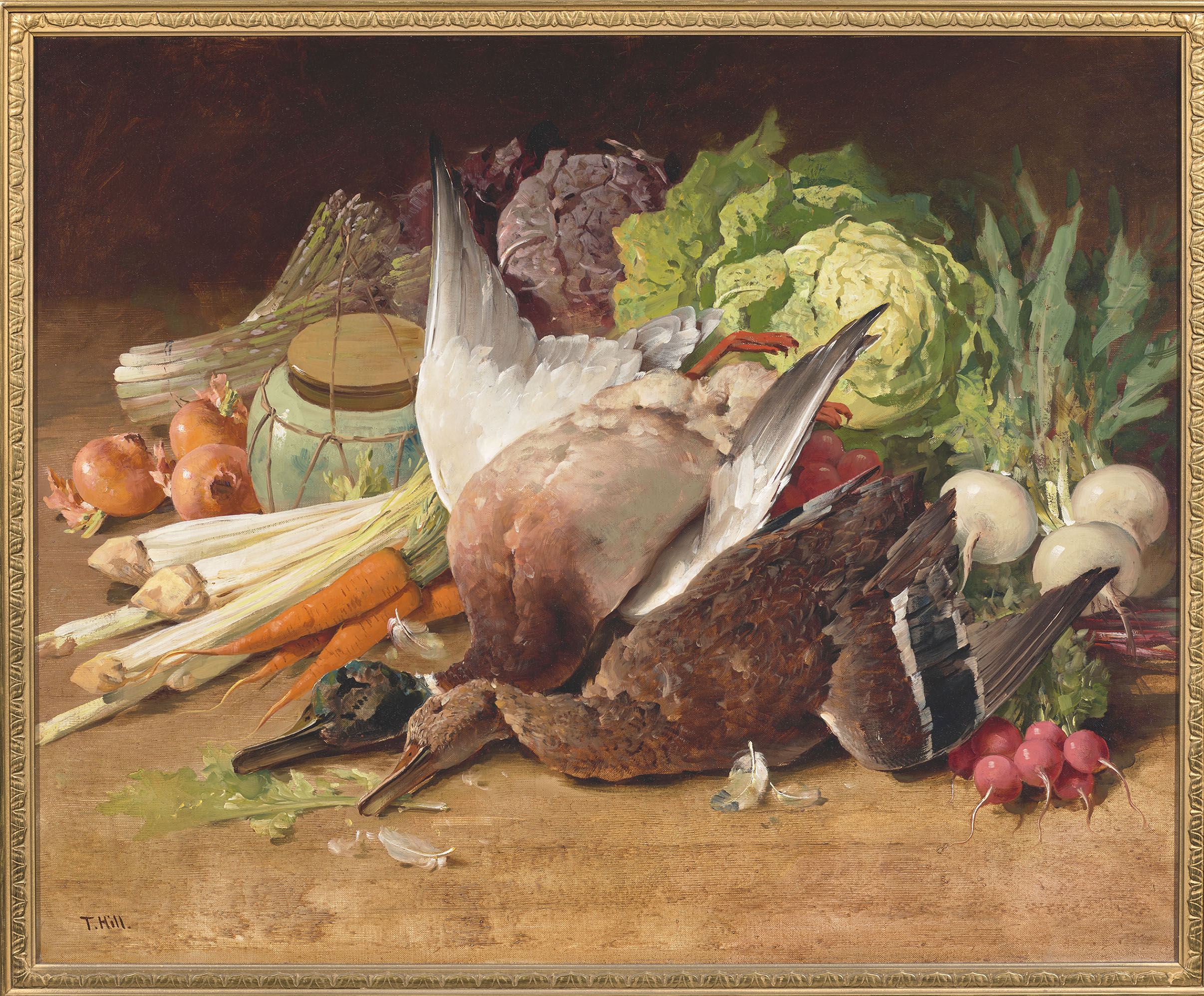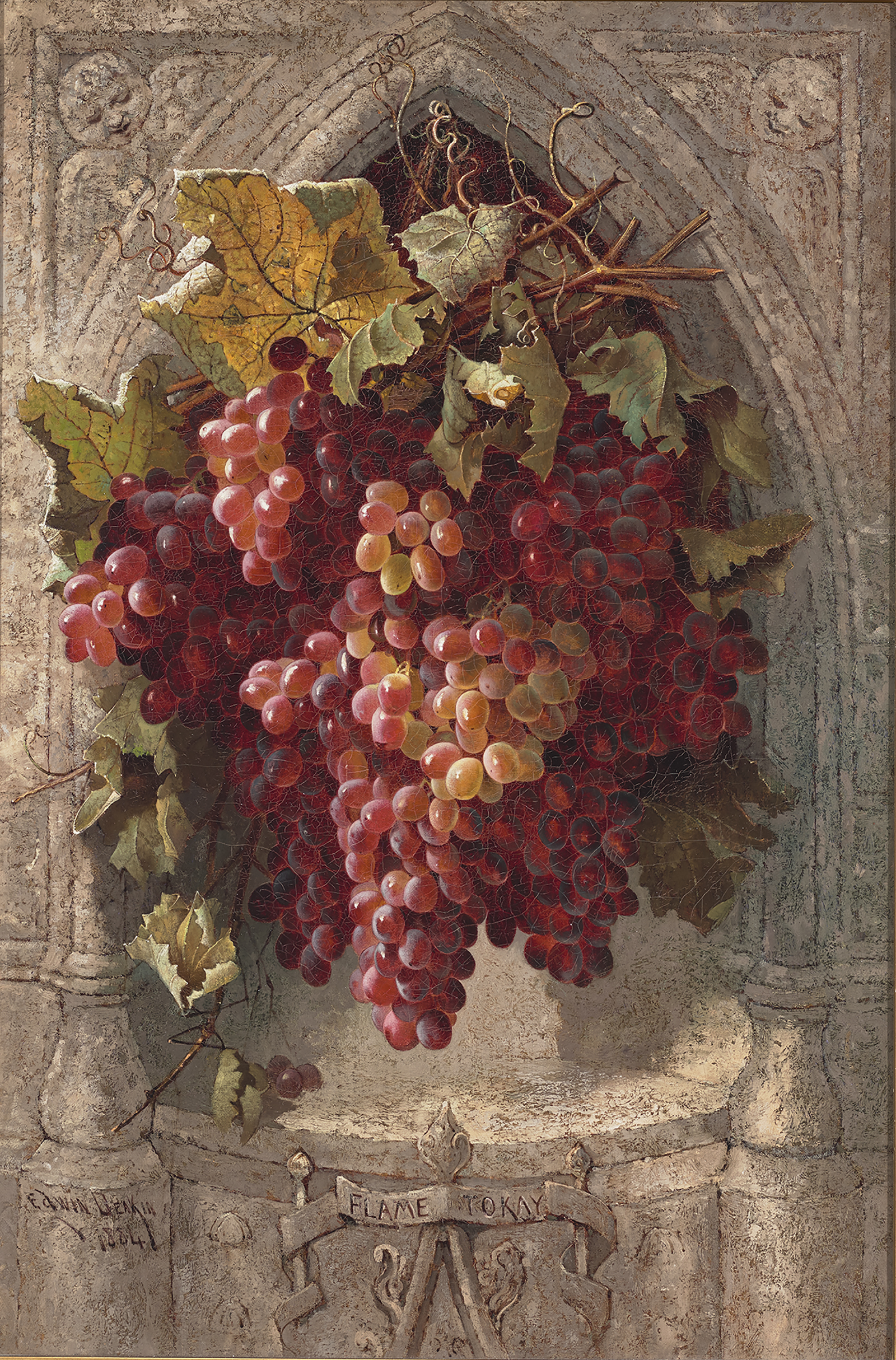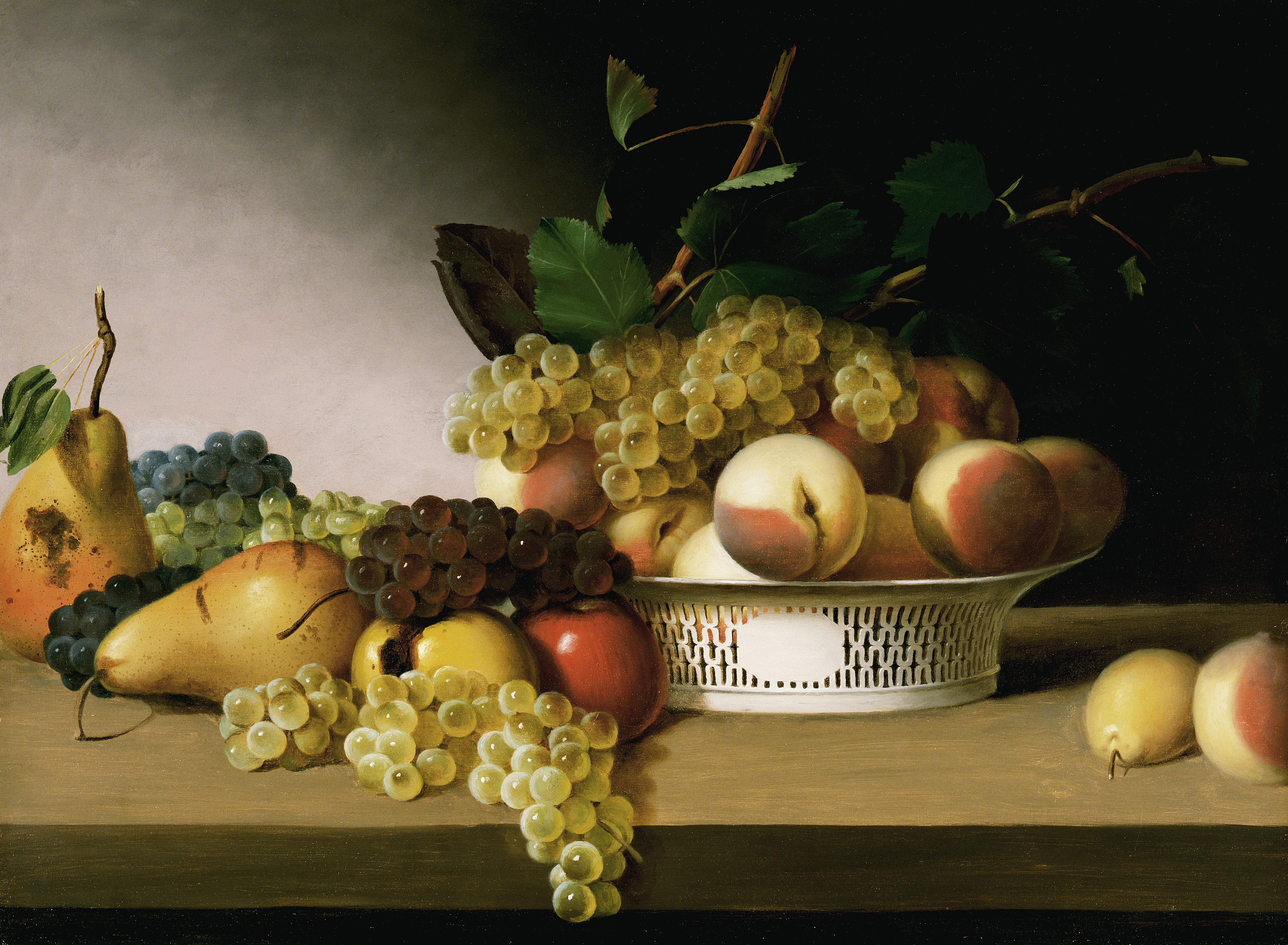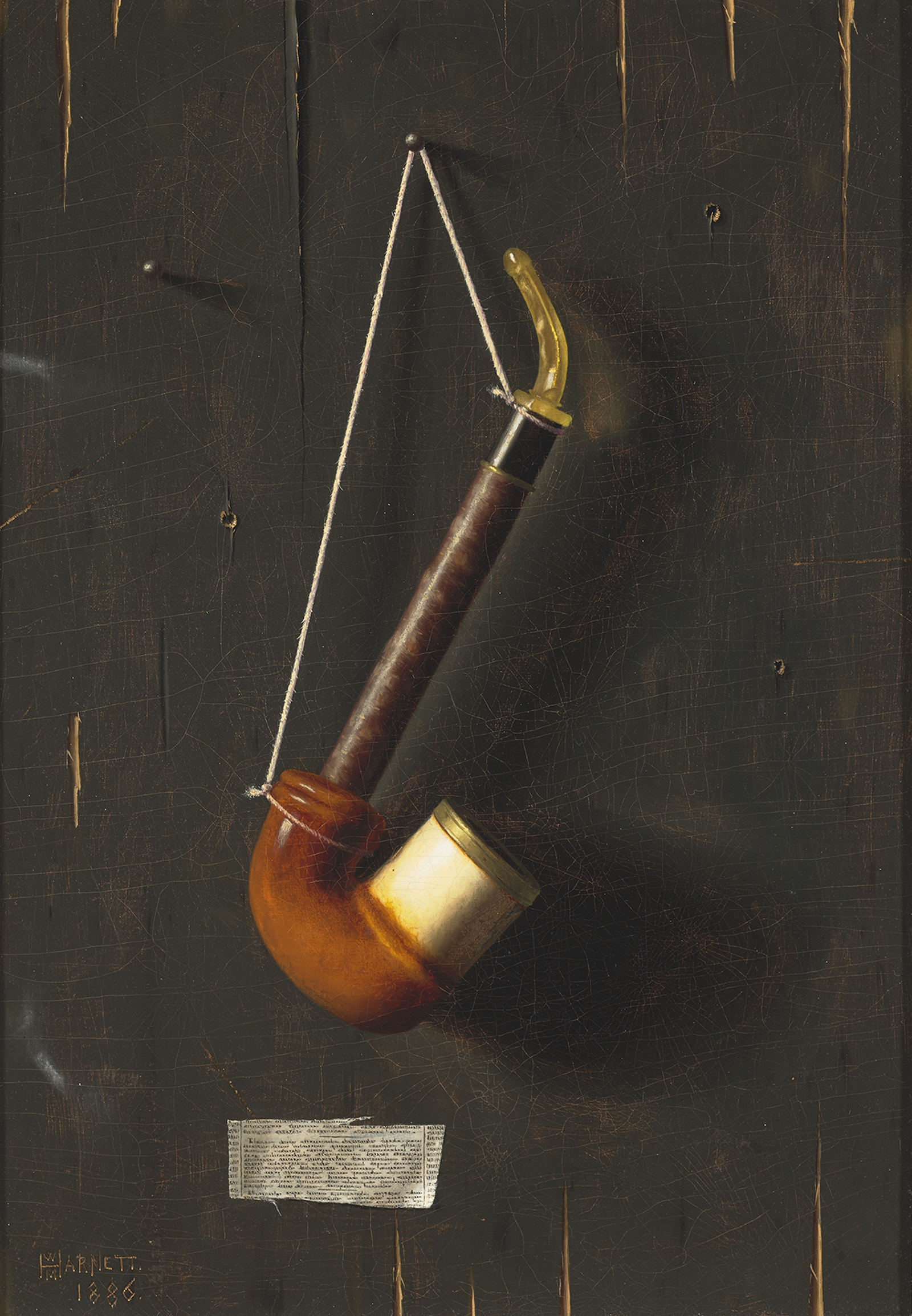Oranges in Tissue Paper
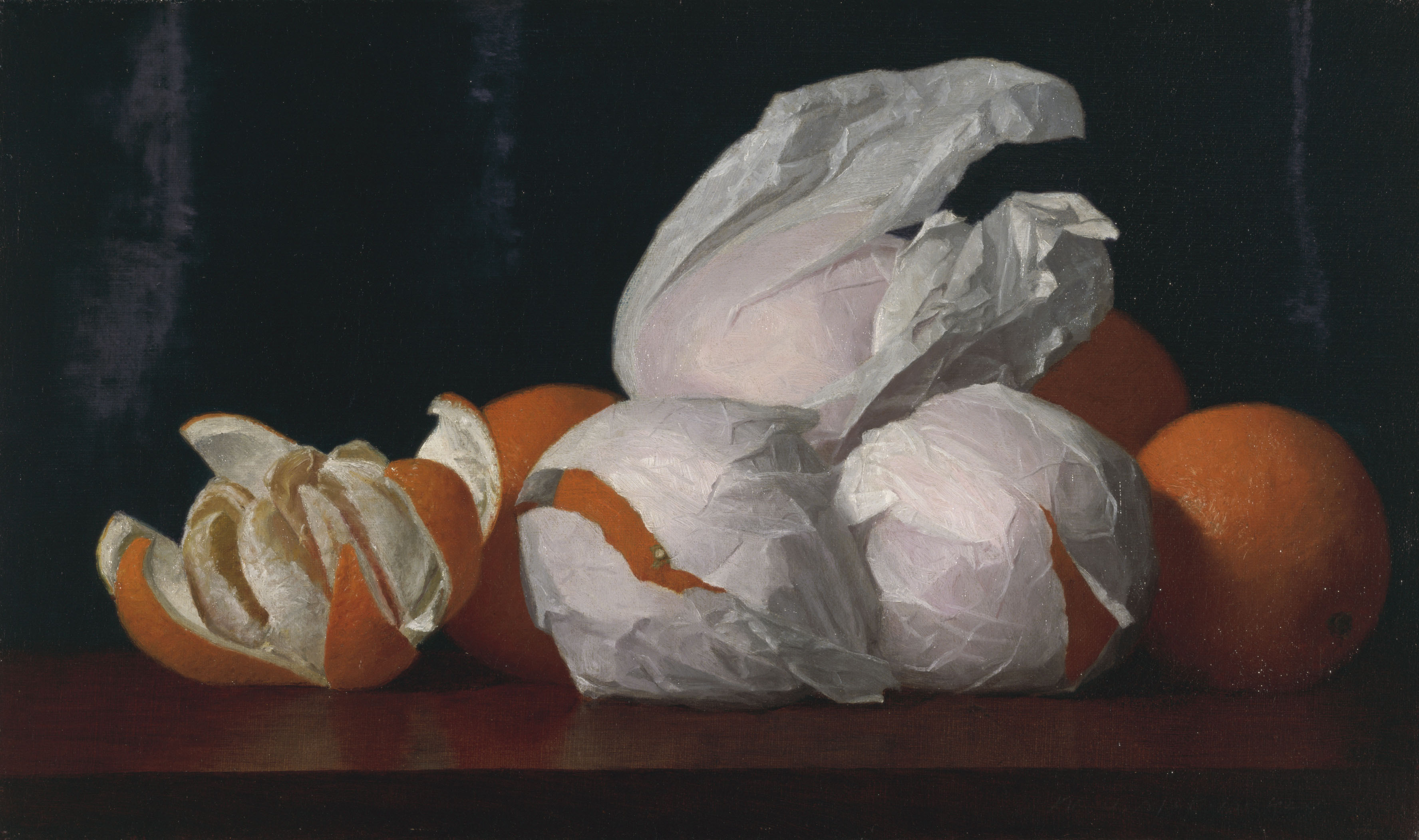
Which foods do you treasure?
A study of contrasts, this painting displays multiple textures: crinkly paper, smooth wood, rough peels, and juicy orange fruit. The passage of time is suggested by the various stages in which the oranges lie; wrapped and unwrapped, peeled and unpeeled, a virtual timeline of the fruit’s consumption. They are also depicted like precious objects, which were wrapped and shipped to the East Coast from the citrus groves in California.

